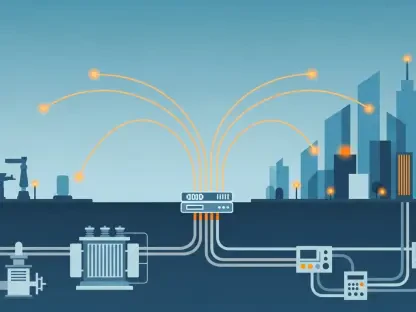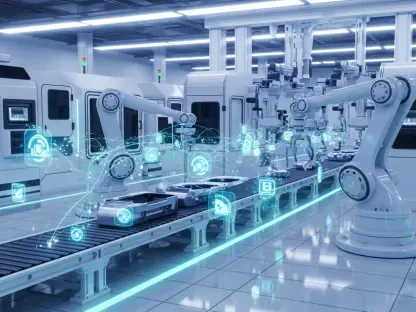Two decades ago, a groundbreaking initiative by the U.S. Department of Defense’s Defense Advanced Research Projects Agency (DARPA) set the stage for a technological revolution that would forever change the landscape of transportation and beyond. The DARPA Grand Challenge, launched to accelerate the development of unmanned ground vehicles for military use, began as a daring experiment in the deserts of the American Southwest. What started with stumbling failures in 2004 has evolved into a global phenomenon, with autonomous vehicles (AVs) now navigating city streets, industrial sites, and agricultural fields. This journey from military ambition to civilian transformation showcases human ingenuity and the relentless pursuit of innovation. As the impact of this pivotal competition continues to unfold, it becomes clear that the seeds planted in the Mojave Desert have grown into a sprawling network of advancements reshaping how society moves and operates.
The Spark of a New Era
The origins of the DARPA Grand Challenge trace back to a congressional mandate in 2001, which aimed to have one-third of U.S. ground combat vehicles unmanned by 2015, reducing human risk on battlefields. DARPA responded with a bold competition, offering substantial cash incentives—$1 million in 2004 and $2 million in 2005—to inspire engineers and innovators to create vehicles capable of autonomous navigation over rugged terrain. The initial attempt in 2004, held in the unforgiving Mojave Desert, ended in disappointment as no team completed the course, with the farthest vehicle stalling after a mere 7.5 miles. Despite this, the event ignited a spark of determination among participants and organizers alike. It exposed the immense challenges of real-world autonomous navigation and set the stage for a historic comeback. The lessons learned from this early setback proved invaluable, highlighting the need for robust technology and creative problem-solving in the face of harsh, unpredictable environments.
In 2005, the tide turned dramatically when Stanford University’s entry, a modified Volkswagen Touareg named “Stanley,” triumphed by completing a daunting 132-mile desert course in under seven hours. This achievement was no small feat—navigating treacherous sections like Beer Bottle Pass required adaptive path planning and rudimentary artificial intelligence (AI) that was groundbreaking for its time. Stanley’s success marked a turning point, demonstrating that machines could handle complex, unstructured environments without human intervention. Often described as the birth of the modern self-driving car, this victory resonated far beyond the competition, capturing the imagination of technologists and policymakers. It underscored the potential for autonomy to transform not just military operations but also civilian life, laying a foundation for innovations that would ripple through industries in the decades to follow.
Technological Leaps Forward
The DARPA Grand Challenge acted as a catalyst for a wave of technological advancements that have since become integral to autonomous vehicle systems. One of the most striking developments has been in LIDAR technology, which during the 2005 challenge cost upwards of $75,000 per unit and offered a limited detection range of 30-40 meters. Today, these units are available for just a few hundred dollars, with ranges extending up to 600 meters, enabling precise environmental mapping even in challenging conditions. Similarly, high-definition (HD) mapping has progressed from basic GPS waypoints to centimeter-accurate digital maps that guide vehicles through intricate urban landscapes. Machine learning, too, has evolved from handcrafted algorithms to deep neural networks capable of processing billions of parameters in real time, allowing AVs to make split-second decisions with remarkable accuracy.
Beyond these, sensor fusion and computational power have undergone transformative growth since the early days of the challenge. Stanley relied on six Intel Pentium M processors and basic Kalman filters to interpret its surroundings, a stark contrast to modern AVs equipped with chips delivering over 1,000 trillion operations per second (TOPS). The integration of multiple sensors—cameras, radar, and LIDAR—now creates a cohesive picture of a vehicle’s environment, a process refined through AI to prioritize data based on context. These advancements, initially spurred by the need to conquer desert terrain, have paved the way for autonomous systems to operate in densely populated cities and diverse industrial settings. The rapid pace of these developments highlights how a single competition managed to accelerate technologies that underpin much of today’s driverless ecosystem, proving the value of ambitious, high-stakes innovation.
Building a Community of Innovators
The human impact of the DARPA Grand Challenge is as significant as its technological contributions, fostering a network of pioneers who have shaped the autonomous vehicle industry. Sebastian Thrun, who led Stanford’s winning team in 2005, later spearheaded Google’s self-driving car initiative, which evolved into Waymo, a leader in robotaxi services. Similarly, alumni from Carnegie Mellon University, another key participant in the challenges, have influenced major players like Cruise and Zoox, spreading expertise across the sector. This brain trust, born from a shared experience of tackling seemingly impossible problems, transformed a military-focused contest into a springboard for commercial and industrial applications. The collaborative spirit forged during those early competitions continues to drive progress, as ideas and talent circulate through startups, corporations, and research institutions worldwide.
This legacy of community-building extends beyond individual success stories to the broader culture of innovation it inspired. The DARPA Grand Challenge created a platform where failure was not a dead end but a stepping stone, encouraging participants to iterate and improve. Many of the engineers and researchers involved went on to mentor new generations of technologists, ensuring that the knowledge gained from desert trials was not confined to a single event. This ripple effect has been instrumental in turning autonomous technology into a global endeavor, with implications far beyond its original military scope. The enduring connections and shared vision among these early innovators highlight how a focused initiative can cultivate a movement, one that continues to push the boundaries of what machines can achieve in service of humanity.
Expanding Horizons Beyond the Military
While the DARPA Grand Challenge was rooted in military objectives to minimize human exposure to danger on the battlefield, its influence has permeated civilian and industrial spheres in remarkable ways. Today, companies like Waymo, Tesla, and Baidu operate robotaxi services in cities across the globe, providing millions of rider-only miles and redefining urban mobility. Waymo, for instance, has become a benchmark for commercial autonomy, demonstrating the practicality of driverless transportation in real-world settings. This transition from military experiment to public utility illustrates the adaptability of autonomous technology, as solutions developed for combat scenarios find relevance in everyday life, addressing challenges like traffic congestion and accessibility with innovative approaches.
The reach of autonomy extends even further into industries that might seem unrelated to transportation at first glance. In mining, companies like Komatsu and Caterpillar deploy autonomous trucks to haul billions of tons of material without drivers, enhancing safety and efficiency in hazardous environments. Agriculture benefits from similar advancements, with firms like John Deere using self-driving machinery to optimize planting and harvesting. Logistics, too, has been transformed by autonomous systems, as evidenced by Amazon’s use of robots to streamline warehouse operations and delivery processes. These diverse applications underscore the versatility of technologies born from the DARPA initiative, showing how a singular focus on unmanned vehicles has blossomed into a multi-faceted revolution that boosts productivity and safety across sectors.
Prioritizing Safety and Scalability
As autonomous vehicles become more prevalent, ensuring safety has emerged as a paramount concern, with modern systems designed to outperform human drivers in critical scenarios. Data from industry leaders like Waymo reveals a significant reduction in severe accidents, with a reported 79% fewer airbag-deployment crashes compared to human-operated vehicles. This is achieved through redundant sensor arrays—combining cameras, LIDAR, and radar—and sophisticated AI that dynamically assesses and responds to environmental variables. Such advancements represent a leap from the rudimentary setups of early AVs, reflecting a commitment to reliability that is essential for gaining public trust and regulatory approval in an era where driverless tech is increasingly integrated into daily routines.
Equally important to the proliferation of autonomous systems is the scalability made possible by dramatic cost reductions and performance enhancements. LIDAR units, once prohibitively expensive, are now accessible at a fraction of their original price, while their capabilities have expanded exponentially. Computational power, too, has surged, enabling real-time processing that was unimaginable during the initial challenges. These improvements have lowered barriers to entry, allowing smaller companies and diverse industries to adopt autonomous solutions. The focus on affordability and efficiency ensures that the benefits of autonomy are not limited to a select few but can be democratized, paving the way for widespread implementation that transforms how societies function on a fundamental level.
Navigating Future Obstacles
Despite the remarkable strides made since the DARPA Grand Challenge, significant hurdles remain on the path to full autonomy. Public skepticism toward driverless technology persists, often fueled by high-profile incidents and concerns over reliability in unpredictable situations. Building trust requires transparent communication about safety measures and continuous improvement in system performance to address these apprehensions. Regulatory frameworks also lag behind technological progress, creating uncertainty for companies seeking to deploy AVs at scale. Harmonizing standards across regions and ensuring compliance without stifling innovation is a delicate balance that policymakers and industry stakeholders must navigate together to unlock the full potential of autonomous systems.
Additionally, the challenge of handling rare edge-case scenarios in AI training looms large, as even the most advanced systems can struggle with unexpected conditions not covered in their datasets. Developing robust algorithms capable of adapting to anomalies is critical, as is the need for extensive real-world testing to refine decision-making processes. These ongoing issues highlight the importance of balancing rapid innovation with ethical responsibility, ensuring that advancements do not outpace the ability to manage risks. Looking ahead, addressing these obstacles will be essential to realizing a future where autonomous technology is as ubiquitous and trusted as conventional tools, fundamentally altering the dynamics of mobility and industry.









